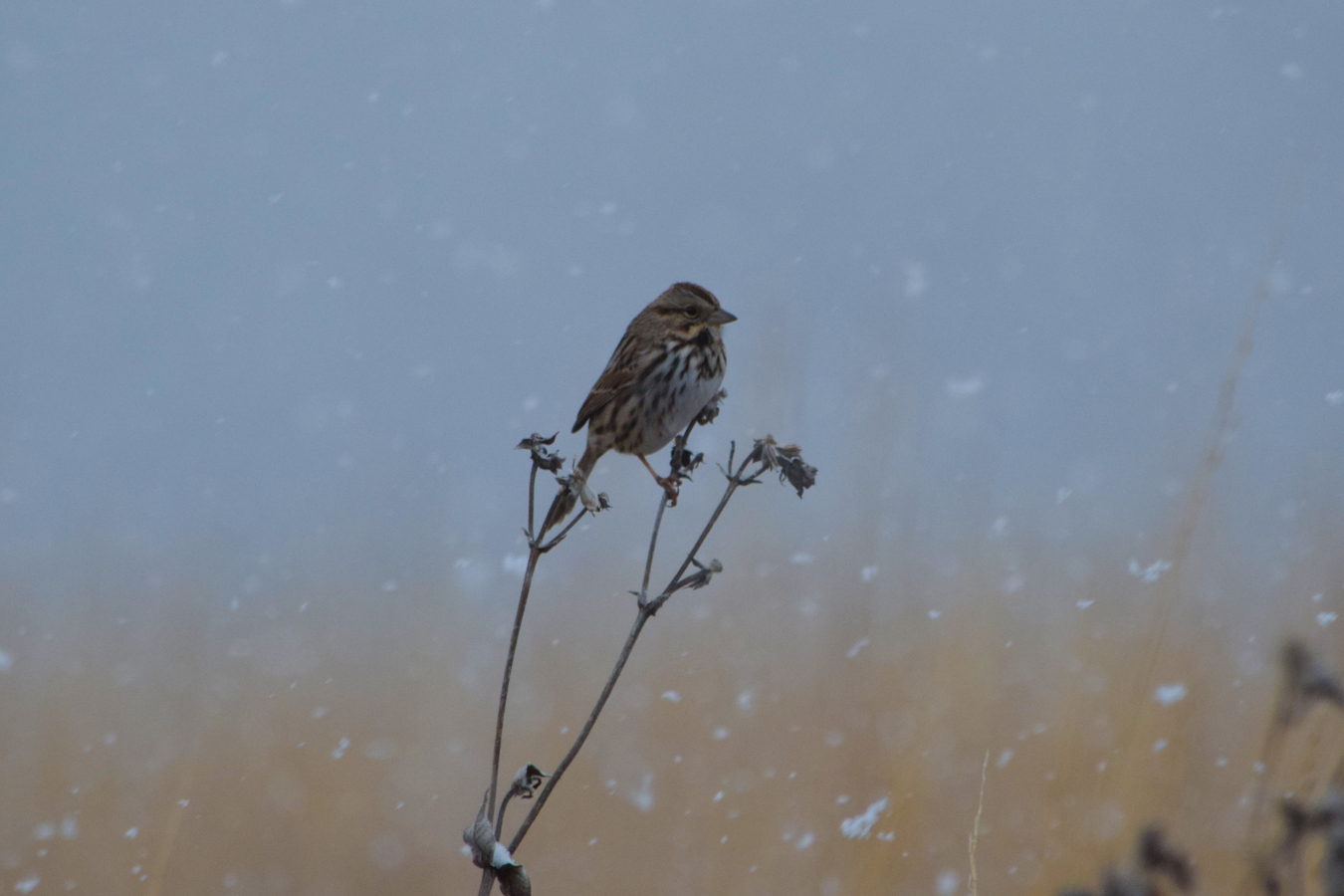Wintering species find habitat at Fernald Preserve and Weldon Spring Site.
March 9, 2021
A song sparrow rests on prairie grass at the Weldon Spring Site.
A diverse array of feathered friends can be found throughout the seasons at the U.S. Department of Energy Office of Legacy Management’s Fernald Preserve in Ohio and Weldon Spring Site in Missouri — and for good reason. These ecologically restored sites provide ample habitat for hundreds of species, as they go about foraging, building nests, or finding mates. Open to the public, these sites have also attracted a growing group of hikers, photographers, and bird-watchers.
While birders, the popular name for bird-watchers, can be found at both the Fernald Preserve and Weldon Spring sites year-round, February is particularly special due to the Great Backyard Bird Count (GBBC), an international citizen scientist event conducted by the Cornell Lab of Ornithology and National Audubon Society. Launched in 1998, GBBC was the first online citizen science project to collect data on wild birds and to display results in near real time. Birders from all over the world provide their bird sighting information to eBird, the Cornell Lab of Ornithology's online database, and utilize the resulting data to locate accessible birding locations.

Local photographer Pat Bell captured a once-in-a-lifetime shot of a short-eared owl and a northern harrier sparring over a coveted meadow vole at Fernald Preserve.
The GBBC at the Weldon Spring Site is historically celebrated by the interpretive staff through planned, weekend-long programming. In the past, the site invited guests to spend the weekend with a pair of binoculars in hand, spotting birds and contributing to the count. This year, due to COVID-19, site staff invited guests to continue the tradition in their own backyards with STEM with LM’s Be a Clever Birder, a self-guided introduction to birding.
Birders may catch sight of the song sparrow, one of North America’s most widespread birds and a year-round resident at the Weldon Spring Site. In the summer, these sparrows primarily eat insects, but in the winter, they feed heavily on seeds from grasses and weeds, hopping through Howell Prairie searching for their next meal. American goldfinches congregate in the weedy fields and at feeders, making musical and plaintive calls. These are just two of the many species counted during the GBBC at the Weldon Spring Site every year.

Local photographer Lenny Beck captured a serene sight of three Wilson’s snipes and their reflections at Fernald Preserve’s wetlands.
While there has never been a Fernald Preserve interpretive staff-supported event scheduled for the GBBC, the citizen scientists who visit the rural southwest Ohio site certainly contribute their fair share of data over the course of the year.
Fernald Preserve is one of the many “hotspots” indicated on eBird. Since the preserve opened to the public in 2008, 253 species have been recorded. If a bird appears at the preserve that is unusual for the area, it doesn’t take long for the word to spread, sometimes bringing birders from over 100 miles away.
Hiking on the 7 miles of walking trails or waiting patiently at a wildlife viewing deck may reveal a least bittern peeking through cattails, a meadowlark perched atop a prairie flower, juvenile pileated woodpeckers eagerly begging from a tree cavity nest, or ring-necked ducks floating on any of the many open water ponds. Winter also brings a diversity of raptors in their down “jackets” hunting the marshes and meadows. Wildlife photographers can get great action shots of bald eagles, northern harriers, red-tailed hawks, American kestrels, short-eared owls, great-horned owls, and more. Recently, lucky visitors witnessed two adult bald eagles sharing a freshly caught mallard dinner.

Site interpreter Kevin McCarthy photographed the beautiful winter colors of an American goldfinch at the Weldon Spring Site.
The world-class birding at the Fernald Preserve and Weldon Spring sites wouldn’t be possible without the ecologically restored areas at these two sites, designed to provide habitat and green space for local wildlife. LM continues to take proactive measures in a commitment to conservation and beneficial reuse at these two sites by creating, restoring, protecting and enhancing habitat. The next time a birder wants to add a few new species to their life list, they should plan a visit to one of these LM sites.

